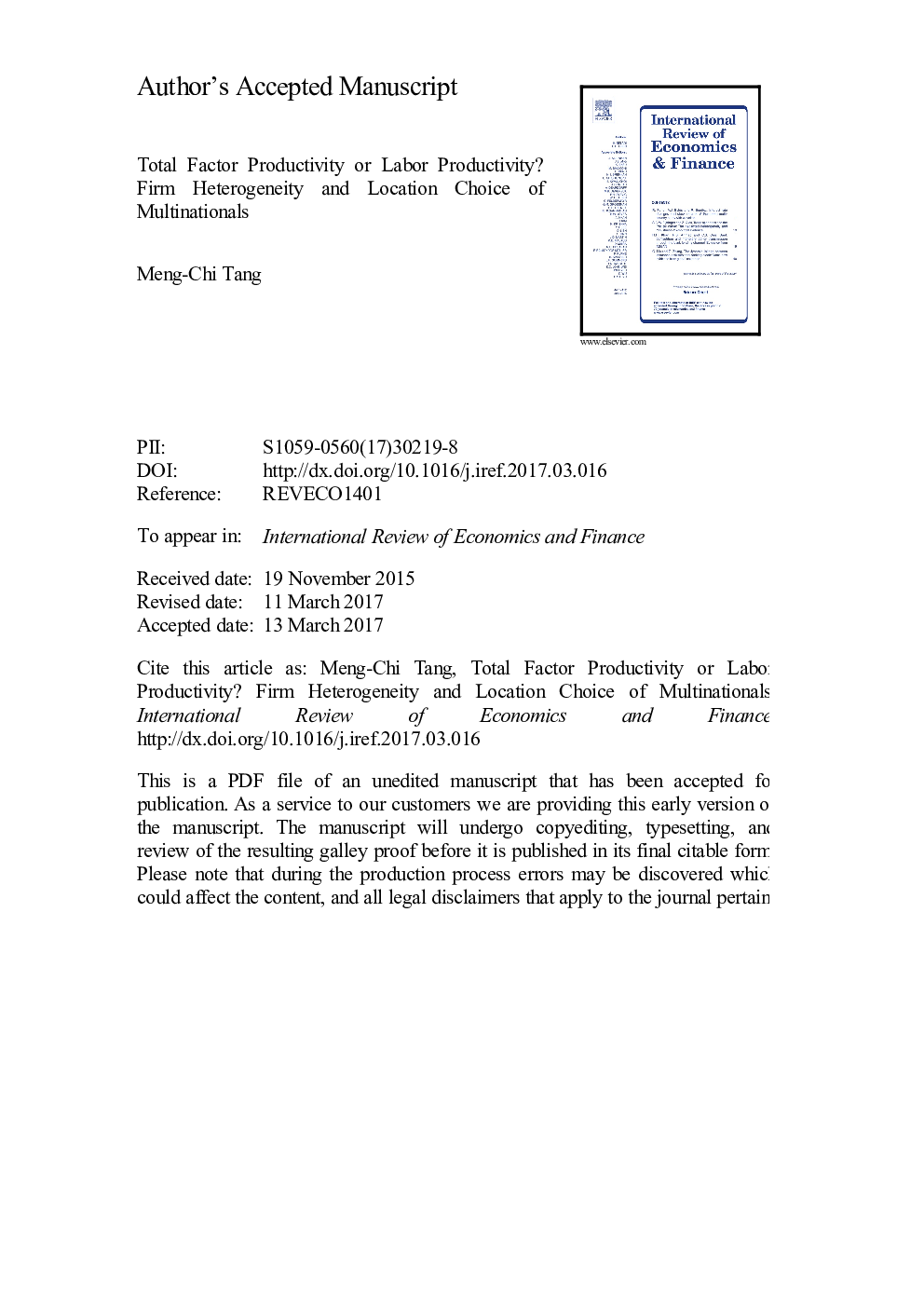| Article ID | Journal | Published Year | Pages | File Type |
|---|---|---|---|---|
| 5083103 | International Review of Economics & Finance | 2017 | 38 Pages |
Abstract
This study considers total factor productivity and labor productivity as different proxies for firm heterogeneity, although they are often used interchangeably in the literature. I argue that the productivity measures are related to the foreign integration strategies adopted by the multinationals and should reflect a different productivity sorting. Using a panel data of Taiwanese multinationals, the empirical results show that the number of their investing locations increases with labor productivity but decreases with total factor productivity. The MNEs with higher total factor productivity were more likely to invest in countries with higher prices or wages. Empirical results also show that China is the top choice for the MNEs with either increasing total factor productivity or labor productivity. If their labor productivity is further increased, they would consider to invest in the U.S. or Hong Kong and Singapore.
Related Topics
Social Sciences and Humanities
Economics, Econometrics and Finance
Economics and Econometrics
Authors
Meng-Chi Tang,
